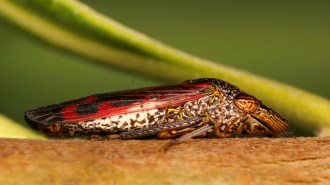Uncategorized
-
 Climate
ClimateWhy this year’s climate conditions helped Hurricane Beryl smash records
Scientists predicted an active hurricane season, but a July Category 5 storm is still stunning.
-
 Health & Medicine
Health & MedicineA bizarre video of eyeballs illustrates our pupils shrink with age
Pupil size can decrease up to 0.4 millimeters per decade, hinting at why it can be increasingly harder for people to see in dim light as they age.
-
 Tech
TechThis 3-D printer can fit in the palm of your hand
Researchers developed a chip-based device for 3-D printing objects on the go.
By Claire Yuan -
 Astronomy
AstronomyA stellar explosion may add a temporary ‘new star’ to the night sky this summer
A nova occurs in the constellation Corona Borealis once every 80 years. Its bright light will be visible to the naked eye for up to a week.
By Jay Bennett -
 Climate
ClimateHow powdered rock could help slow climate change
A method called enhanced rock weathering shows promise at capturing carbon dioxide from the air. But verifying the carbon removal is a challenge.
-

AI is coming to medicine, but it’s got a lot to learn
Editor in chief Nancy Shute discusses the present and future of using artificial intelligence technology in medicine.
By Nancy Shute -

-
 Agriculture
Agriculture50 years ago, scientists ID’d a threat to California wine country
Fifty years after scientists identified the cause of Pierce's disease, which damages vineyards, there still isn't a cure.
-
 Earth
EarthAn ancient earthquake changed the course of the Ganges River
Flooding from a similar earthquake today could threaten about 170 million people in India and Bangladesh who live in low-lying regions nearby.
By Sid Perkins -
 Neuroscience
Neuroscience‘Do I Know You?’ explores face blindness and the science of the mind
In her memoir, journalist Sadie Dingfelder draws on her own experiences to highlight the astonishing diversity of people’s inner lives.
-
 Humans
HumansDoes social status shape height?
A controversial idea drawing on findings from the animal kingdom suggests there’s more to human stature than genetics and nutrition.
By Sujata Gupta -
 Paleontology
PaleontologyStunning trilobite fossils include soft tissues never seen before
Well-preserved fossils from Morocco help paleontologists understand the weird way trilobites ate and perhaps why these iconic animals went extinct.